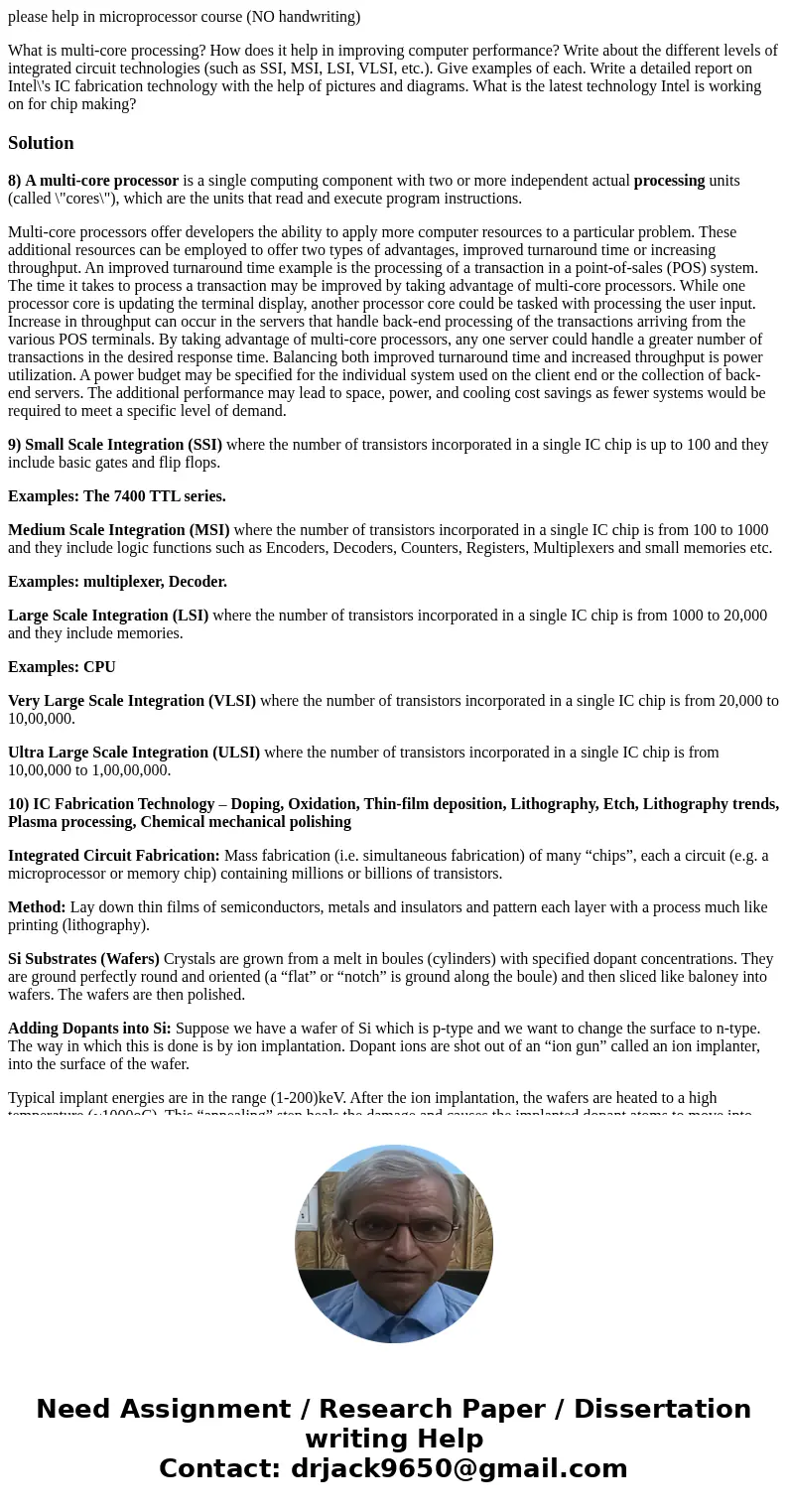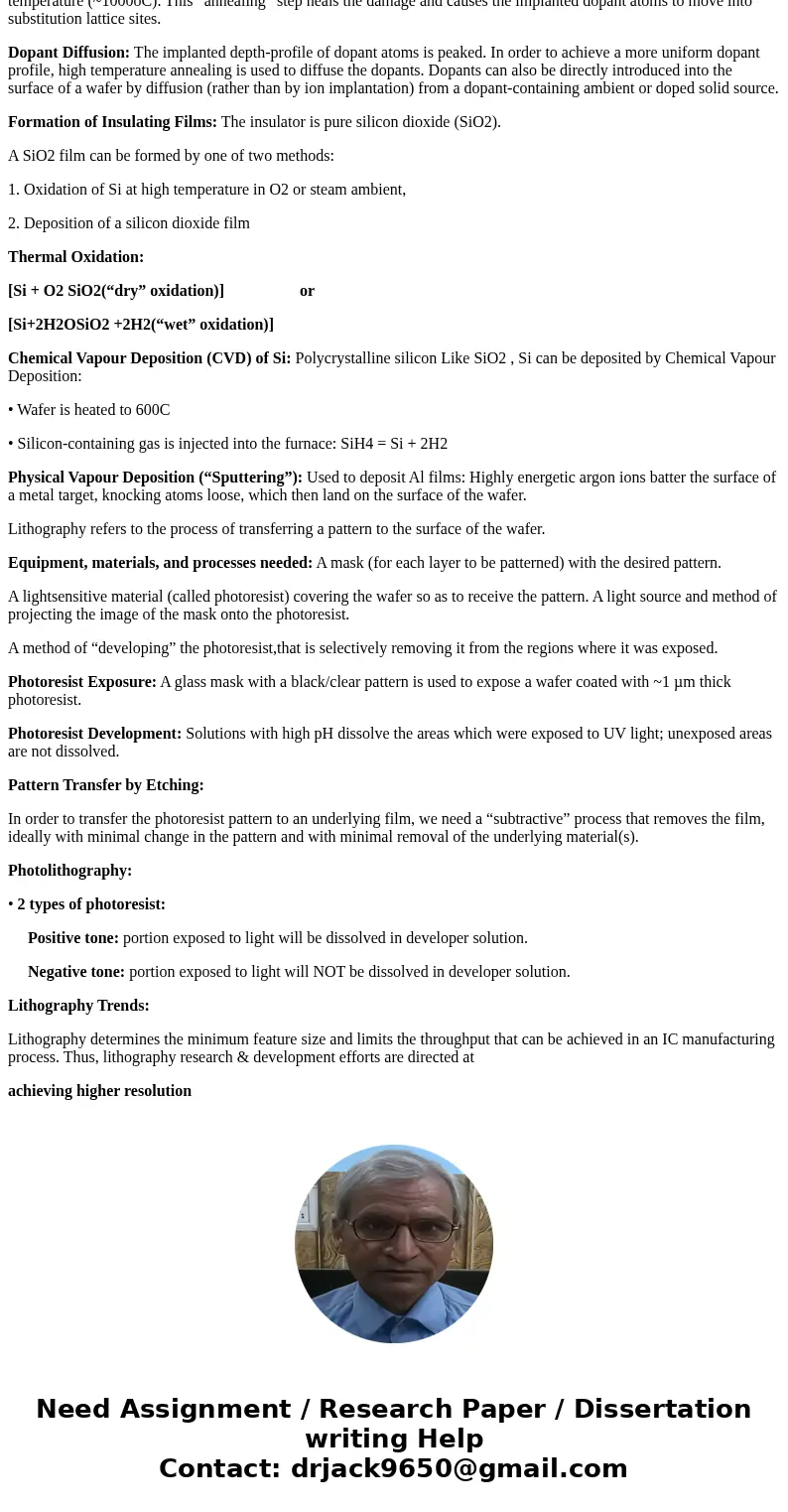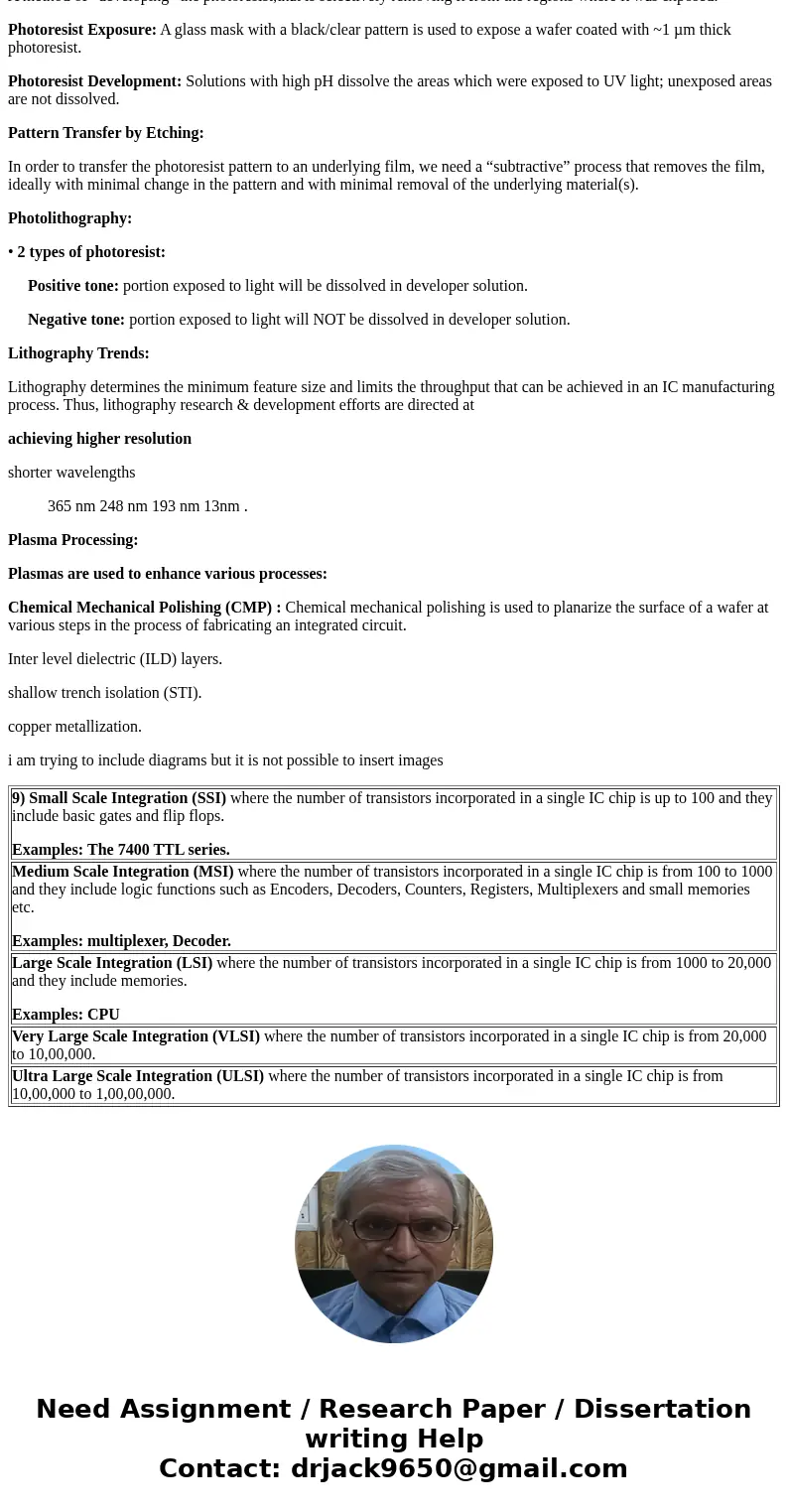please help in microprocessor course NO handwriting What is
please help in microprocessor course (NO handwriting)
What is multi-core processing? How does it help in improving computer performance? Write about the different levels of integrated circuit technologies (such as SSI, MSI, LSI, VLSI, etc.). Give examples of each. Write a detailed report on Intel\'s IC fabrication technology with the help of pictures and diagrams. What is the latest technology Intel is working on for chip making?Solution
8) A multi-core processor is a single computing component with two or more independent actual processing units (called \"cores\"), which are the units that read and execute program instructions.
Multi-core processors offer developers the ability to apply more computer resources to a particular problem. These additional resources can be employed to offer two types of advantages, improved turnaround time or increasing throughput. An improved turnaround time example is the processing of a transaction in a point-of-sales (POS) system. The time it takes to process a transaction may be improved by taking advantage of multi-core processors. While one processor core is updating the terminal display, another processor core could be tasked with processing the user input. Increase in throughput can occur in the servers that handle back-end processing of the transactions arriving from the various POS terminals. By taking advantage of multi-core processors, any one server could handle a greater number of transactions in the desired response time. Balancing both improved turnaround time and increased throughput is power utilization. A power budget may be specified for the individual system used on the client end or the collection of back-end servers. The additional performance may lead to space, power, and cooling cost savings as fewer systems would be required to meet a specific level of demand.
9) Small Scale Integration (SSI) where the number of transistors incorporated in a single IC chip is up to 100 and they include basic gates and flip flops.
Examples: The 7400 TTL series.
Medium Scale Integration (MSI) where the number of transistors incorporated in a single IC chip is from 100 to 1000 and they include logic functions such as Encoders, Decoders, Counters, Registers, Multiplexers and small memories etc.
Examples: multiplexer, Decoder.
Large Scale Integration (LSI) where the number of transistors incorporated in a single IC chip is from 1000 to 20,000 and they include memories.
Examples: CPU
Very Large Scale Integration (VLSI) where the number of transistors incorporated in a single IC chip is from 20,000 to 10,00,000.
Ultra Large Scale Integration (ULSI) where the number of transistors incorporated in a single IC chip is from 10,00,000 to 1,00,00,000.
10) IC Fabrication Technology – Doping, Oxidation, Thin-film deposition, Lithography, Etch, Lithography trends, Plasma processing, Chemical mechanical polishing
Integrated Circuit Fabrication: Mass fabrication (i.e. simultaneous fabrication) of many “chips”, each a circuit (e.g. a microprocessor or memory chip) containing millions or billions of transistors.
Method: Lay down thin films of semiconductors, metals and insulators and pattern each layer with a process much like printing (lithography).
Si Substrates (Wafers) Crystals are grown from a melt in boules (cylinders) with specified dopant concentrations. They are ground perfectly round and oriented (a “flat” or “notch” is ground along the boule) and then sliced like baloney into wafers. The wafers are then polished.
Adding Dopants into Si: Suppose we have a wafer of Si which is p-type and we want to change the surface to n-type. The way in which this is done is by ion implantation. Dopant ions are shot out of an “ion gun” called an ion implanter, into the surface of the wafer.
Typical implant energies are in the range (1-200)keV. After the ion implantation, the wafers are heated to a high temperature (~1000oC). This “annealing” step heals the damage and causes the implanted dopant atoms to move into substitution lattice sites.
Dopant Diffusion: The implanted depth-profile of dopant atoms is peaked. In order to achieve a more uniform dopant profile, high temperature annealing is used to diffuse the dopants. Dopants can also be directly introduced into the surface of a wafer by diffusion (rather than by ion implantation) from a dopant-containing ambient or doped solid source.
Formation of Insulating Films: The insulator is pure silicon dioxide (SiO2).
A SiO2 film can be formed by one of two methods:
1. Oxidation of Si at high temperature in O2 or steam ambient,
2. Deposition of a silicon dioxide film
Thermal Oxidation:
[Si + O2 SiO2(“dry” oxidation)] or
[Si+2H2OSiO2 +2H2(“wet” oxidation)]
Chemical Vapour Deposition (CVD) of Si: Polycrystalline silicon Like SiO2 , Si can be deposited by Chemical Vapour Deposition:
• Wafer is heated to 600C
• Silicon-containing gas is injected into the furnace: SiH4 = Si + 2H2
Physical Vapour Deposition (“Sputtering”): Used to deposit Al films: Highly energetic argon ions batter the surface of a metal target, knocking atoms loose, which then land on the surface of the wafer.
Lithography refers to the process of transferring a pattern to the surface of the wafer.
Equipment, materials, and processes needed: A mask (for each layer to be patterned) with the desired pattern.
A lightsensitive material (called photoresist) covering the wafer so as to receive the pattern. A light source and method of projecting the image of the mask onto the photoresist.
A method of “developing” the photoresist,that is selectively removing it from the regions where it was exposed.
Photoresist Exposure: A glass mask with a black/clear pattern is used to expose a wafer coated with ~1 µm thick photoresist.
Photoresist Development: Solutions with high pH dissolve the areas which were exposed to UV light; unexposed areas are not dissolved.
Pattern Transfer by Etching:
In order to transfer the photoresist pattern to an underlying film, we need a “subtractive” process that removes the film, ideally with minimal change in the pattern and with minimal removal of the underlying material(s).
Photolithography:
• 2 types of photoresist:
Positive tone: portion exposed to light will be dissolved in developer solution.
Negative tone: portion exposed to light will NOT be dissolved in developer solution.
Lithography Trends:
Lithography determines the minimum feature size and limits the throughput that can be achieved in an IC manufacturing process. Thus, lithography research & development efforts are directed at
achieving higher resolution
shorter wavelengths
365 nm 248 nm 193 nm 13nm .
Plasma Processing:
Plasmas are used to enhance various processes:
Chemical Mechanical Polishing (CMP) : Chemical mechanical polishing is used to planarize the surface of a wafer at various steps in the process of fabricating an integrated circuit.
Inter level dielectric (ILD) layers.
shallow trench isolation (STI).
copper metallization.
i am trying to include diagrams but it is not possible to insert images
| 9) Small Scale Integration (SSI) where the number of transistors incorporated in a single IC chip is up to 100 and they include basic gates and flip flops. Examples: The 7400 TTL series. |
| Medium Scale Integration (MSI) where the number of transistors incorporated in a single IC chip is from 100 to 1000 and they include logic functions such as Encoders, Decoders, Counters, Registers, Multiplexers and small memories etc. Examples: multiplexer, Decoder. |
| Large Scale Integration (LSI) where the number of transistors incorporated in a single IC chip is from 1000 to 20,000 and they include memories. Examples: CPU |
| Very Large Scale Integration (VLSI) where the number of transistors incorporated in a single IC chip is from 20,000 to 10,00,000. |
| Ultra Large Scale Integration (ULSI) where the number of transistors incorporated in a single IC chip is from 10,00,000 to 1,00,00,000. |



 Homework Sourse
Homework Sourse